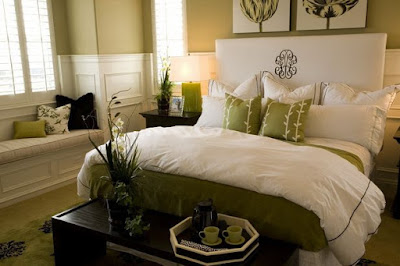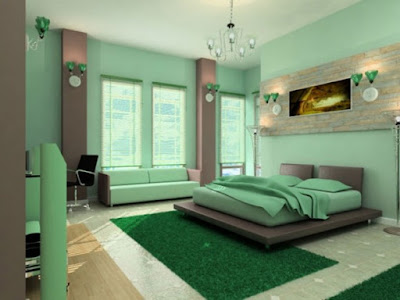How to Restore Antique Iron Beds
 With its intricate scrollwork, detailed spindles and decorative bed-bolt cover, an antique iron bed can bring back the charm of yesteryear -- after you restore it. But before you do so, measure the bed's length to verify your modern mattress will fit the frame. If the bed frame was built between 100 and 150 years ago, chances are you'll need replacement bed rails from a store that specializes in antique bed replacement parts. Because antique beds were independently manufactured, no standard sizes for bed rails or sizes were established. Most twin-size antique beds were typically 72 inches long, compared with today's twin mattress, which is 75 inches long.
With its intricate scrollwork, detailed spindles and decorative bed-bolt cover, an antique iron bed can bring back the charm of yesteryear -- after you restore it. But before you do so, measure the bed's length to verify your modern mattress will fit the frame. If the bed frame was built between 100 and 150 years ago, chances are you'll need replacement bed rails from a store that specializes in antique bed replacement parts. Because antique beds were independently manufactured, no standard sizes for bed rails or sizes were established. Most twin-size antique beds were typically 72 inches long, compared with today's twin mattress, which is 75 inches long.Assess and Repair
Examine the bed thoroughly to ensure it has no rusted-through parts. If you find any, replace as necessary. Measure the side rails, as you might have to replace these along with the hook-up hardware to fit a modern mattress. You can find most of the parts you need for antique beds from a variety of online bed restoration stores. If the frame has rusted holes through it, have it repaired by a professional welder. Unless you have all the pieces of broken medallions, which you can repair with a two-part metal cold-weld product, you will need to replace them. To level the headboard and foot boards, add felt pads to the bottoms of the feet.
Clean It
Clean the bed outdoors with a sponge with a slightly abrasive side dipped in a solution of 1/4-cup mild dishwashing liquid mixed into a gallon of warm water. Scrub the bed to remove dirt, grime and flaky rust. Repeat scrubbing as needed to get the surface dirt and debris off the bed. Hose it off and let it dry thoroughly.
Rust and Paint Removal
Whether the bed has rust, paint residue or both, a wire brush attachment on a power drill can remove most of the rust and a lot of the paint, after you test it on an inconspicuous location to ensure it does not damage the frame. Wear safety goggles, a dust mask and gloves when using the wire brush attachment on the frame. Hold the drill so that the spinning wheel scrapes along the frame; don't press the wheel into the antique iron bed; instead, just let it "walk" across its surface. To remove excess paint, work in a well-ventilated area and apply paint stripper; remove it after it sits on the metal for about 20 minutes, or as directed by the manufacturer's instructions.
Wet-Dry Sandpaper
When you can't use the wire brush attachment or it doesn't get all the rust off, apply 400- or 600-girt wet sandpaper or an emery cloth to the frame to remove all excess rust. Dampen the sandpaper first and wrap it around the round frame, holding it tightly as you sand up and down. Do not use a rougher sandpaper as it could scratch the frame. You can also sand the frame after removing the rust and paint. A 1-to-1 ratio of vinegar and water applied with extra-fine steel wool can also remove excess rust, but it's a messy job.
The Finish
After cleaning and restoring the metal, apply a metal primer to its surface. Use darker primers for dark colors and lighter primers if you plan to paint the bedframe an antique white. After the primer dries -- usually after about an hour or two -- paint it with your chosen paint color. For an oil-rubbed bronze look, spray paint the entire piece with a flat black paint and let it dry overnight, and when dry, paint the frame with the metallic bronzing paint of your choice. If your bed has decorative medallions, you can dry brush them with gold paint or leaf to make them stand out.











Comments
Post a Comment